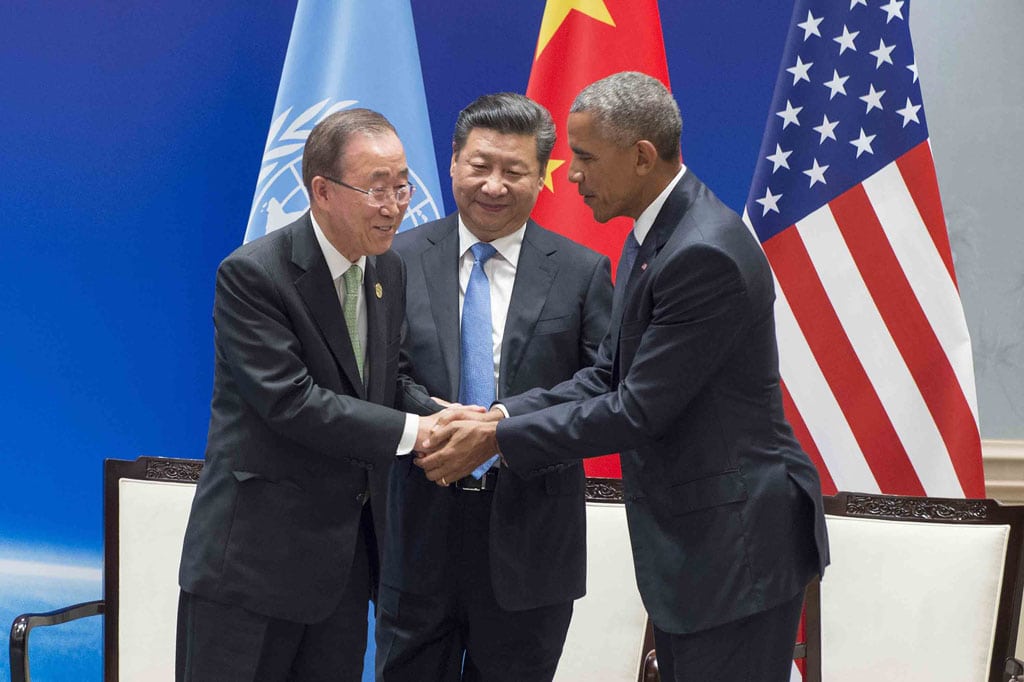
Environmental groups this weekend praised the announcement Saturday that the United States and China, the world’s top two polluters, had formally joined the Paris Agreement on climate change. “It’s remarkable that in a few short years the world’s two leading climate antagonists have become the world’s two leading climate champions. The United States can no longer claim that China’s inaction is an excuse to do nothing, and vice versa,” Bob Perciasepe, president of the Center for Climate and Energy Solutions (C2ES), said in a prepared statement.
The Paris Agreement will enter into force 30 days after 55 nations representing at least 55 percent of global greenhouse gas emissions have submitted to the United Nations their instruments of ratification, acceptance, approval, or accession. Before Saturday’s announcement 24 nations representing only 1.08 percent of global GHG emissions had formally joined the accord.
Based on emissions data the nations submitted to the U.N. during the drafting of the Paris Agreement, the United States and China collectively account for nearly 38 percent of worldwide GHG emissions – the U.S. is responsible for 17.89 percent, while China produces 20.09 percent.
Now, 26 nations representing 39.06 percent of global GHG emissions have officially joined the agreement. “Today’s historic announcement has set a global precedent that has catapulted the world to the cusp of formally implementing the Paris Agreement and will have major positive implications for generations to come,” Sierra Club Executive Director Michael Brune said in a statement.
Formally joining the Paris Agreement is an achievement worth celebrating, Lou Leonard, senior vice president for climate and energy at the World Wildlife Fund, said in a release. However, the Obama administration should not sit on its laurels now, he added. “As 2016 sizzles toward breaking new records, the Obama Administration should chart a course for long-term decarbonization that ensures the US does its fair share to meet the Paris Agreement’s global temperature goals. To do so, the President should deliver a mid-century road map showing the pathway for the United States to achieve net-zero carbon emissions before 2050,” Leonard said.
The Paris Agreement, which was adopted by nearly 200 nations in December at the 21st session of the Conference of the Parties to the United Nations Framework Convention on Climate Change, establishes a legal framework under which nations will pursue nationally determined climate action goals. The stated goal of the agreement is to keep global temperature rise “well below” 2 degrees Celsius, with an ambition to limit it to 1.5 degrees.
The agreement opened for signature on April 22 and was immediately signed by 175 nations, breaking U.N. records.
The U.N. will also host a special event on Sept. 21 at its headquarters in New York to give nations an opportunity to join the agreement.